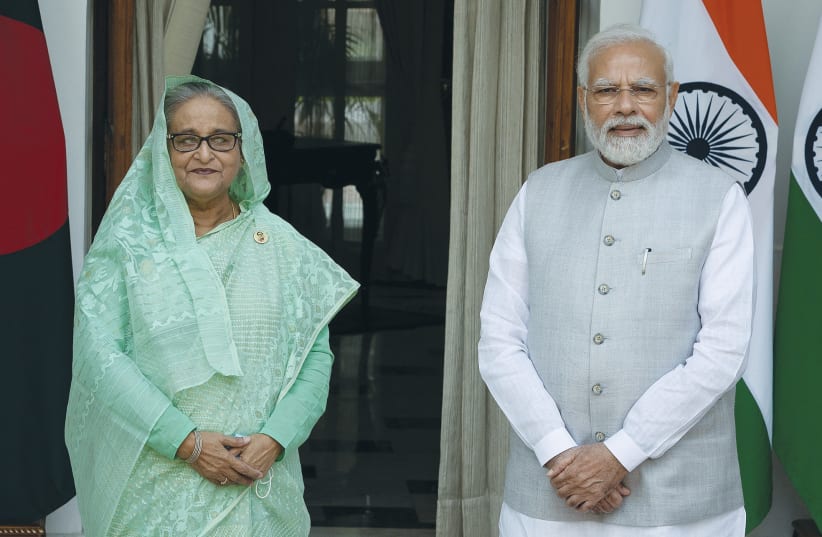The global developments in recent years, mainly COVID-19, the superpower competition and the Russian invasion of Ukraine, have affected the global south by disrupting global supply chains, leading to higher inflation and poverty. The Association of Southeast Asian Nations (ASEAN) countries and the South Asia region were no exception.
Now that these regions have begun to emerge from the above-mentioned challenges, several South and Southeast Asian countries have the potential to play a bigger role regionally and globally. One of them is Bangladesh.
The economic potential is immense. The regions of South and Southeast Asia performed tremendously before the pandemic, leading in GDP growth among emerging and developing economies. ASEAN had a 4.7% growth in 2019, while the largest regional economy, India, reached 3.74%. Its neighbor, Bangladesh reached a staggering growth of 7.9%, positioning it in the top five growing economies in the world.
COVID-19 halted growth: lockdowns, a freeze of manufacturing and tourism, a decrease in domestic consumption and unemployment. As the regions became the epicenter of the pandemic, it became more challenging to keep a vigorous economy. International aid combined with national stimulus packages was crucial in riding out the storm. ASEAN introduced a comprehensive recovery framework to focus on Agriculture productivity, employment, MSME support, health and social protection.
India introduced several stimulus packages, from food security measures and direct cash transfers to support MSMEs, business enterprises and infrastructure development, totaling hundreds of billions of US dollars. Bangladesh invested 4.3% of its GDP to fuel the economy, especially in the export-oriented industry and focused on four goals: increasing public expenditure, formulating a stimulus package, widening social safety net coverage and increasing monetary supply.
Countries in the region had to increase their public debt in order to financially support their communities. Most countries in the region had a relatively low public debt that enabled them to absorb a rise in debt. In general, the programs implemented by the governments had a positive impact on the region, bringing it back on track and driving growth almost at pre-pandemic rates.
Recovery was short-lived
UNFORTUNATELY, THE recovery in 2021 was short-lived due to the Russian invasion of Ukraine, causing a spike in prices and disruption of supply chains, hurting some countries more than others. Again, governments had to rely on external aid and increase their spending. Despite this setback in 2022, the outlook for 2023 and beyond is positive for the South Asia region.
India is projected to reach a 6% growth in the 2023-2024 fiscal year while Bangladesh is projected to reach more than 5% GDP growth. The outlook for ASEAN members is also positive with an estimated growth of more than 4% in 2023, with Vietnam, Indonesia and the Philippines leading.
As the data from the years 2019-2023 demonstrates, despite both regions being affected dramatically by global events, they remained important in driving global growth. Bangladesh stands out, surpassing even developing countries in terms of growth and GDP per capita. Dealing with COVID-19, floods and other global events, Bangladesh was able to withstand the pressure on its economy, maintain growth and keep the public debt at a low rate despite increasing government spending.
Indeed, the key to regional recovery lies not only in the stronger economies regaining momentum but in emerging ones, such as Bangladesh, being able to rebuild their economies. Recently, the IMF approved another aid package to Bangladesh worth $4.7 billion (NIS 17.1) in loans, while it is still hesitant to aid Bangladesh’s neighbors, Sri Lanka and Pakistan, in spite of their economic crisis. This move expresses the confidence of the IMF in the efforts made by Bangladesh’s government to reduce poverty and follow the process to graduate from the status of LDC (least developed countries) to a developing country in 2026.
The recovery of Bangladesh generates numerous opportunities, not only in the economic sphere but also in the strategic sphere. As the interest from the US and China in the region grow, including in Bangladesh, the latter has the potential of becoming an inter-regional economic and geostrategic player. Closer to home, the Abraham Accords have created new opportunities for future cooperation with Israel in sectors that are strategic for Bangladesh, such as Agritech, food safety, climatech and cyber defense.
The writer is a former director for Asia and Euro-Asia affairs in the Israeli National Security Council and has founded Solaris Global Partners to utilize his expertise on Asia, national security and international relations to form a bridge between Israel and Asia.

